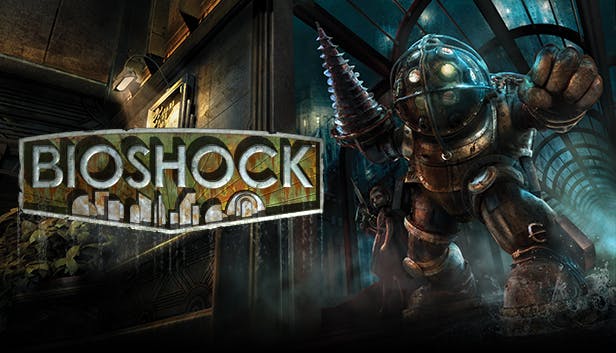Remembering and analyzing dreams with friends, particularly zany long-winded, well-remembered epic dreams, is an enthralling activity. The excitement probably comes from the fact that we remember fewer of them as students due to our extremely low average sleep quality, but that wasn’t always the case. At least for myself, I used to consistently have waking-up, night-sweats, heart-racing, jumping-out-of-bed-to-turn-on-the-lights-and-check-the-closet nightmares. And that kind of excitement, which was nothing but terror for a younger me, is the thrill of horror movies and games like “BioShock.” In 2016, game studio 2K surprised fans of the series by releasing the remastered versions of “BioShock,” “BioShock 2” and “BioShock: Infinite,” with owners of the former two receiving free copies, as a part of “BioShock: The Collection.” Along with higher frame rate and display resolutions, “The Collection” comes with an hour and a half of commentary by Ken Levine (director) and Shawn Robertson (lead artist), which are unlocked through collectible tapes in-game.
In addition to reminding us of the lack of racial diversity in the game industry, the directors serve to explicate themes that are clear to any player who has pretended to read “Atlas Shrugged” or Ayn Rand’s Wikipedia page. (I have chosen to do neither, instead I asked some people who have “read” the source material and got a general sense of it, which feels rigorous enough…) When I first played “BioShock,” probably around 2010, I couldn’t make it past the iconic Big Daddy (think: drill-armed, old-school diving helmeted baddy) introduction scene, on any difficulty, because of the nightmare-infecting paranoia that would seep into my head. And so I set it aside in favor of other games. But, as with any other art medium, there are certain titles that loom, coming up in conversations about a variety of genres within the medium. If it isn’t too pretentious to call it so, this is what makes “BioShock” part of the “video game canon.”
In playing through “BioShock” now I think about what made this game so undeniably good from a gameplay perspective as well as how the horror effect is achieved so fully. The game is at least as overtly didactic as it is terrifying, owing entirely to the ambient environment. Levine, in the commentary, cites how the rich world created in “BioShock” is almost exclusively optional for the player to interact with. The desire to avoid disrupting the flow of the gameplay in mainstream games often causes developers to hide the bulk of the storyline in side artifacts. In “BioShock,” these take the form of the art and architecture of the world as well as the audio logs with which the player can choose to interact. The gameplay does not change if the player does not attempt to interact with these extra components, but the polemical aspect of the game is lost. The audio logs contain commentaries by minor characters who took part in the creation of the genetic modification and experimentation that creates Rapture, the dystopian Atlantis in which the game is set.
Rapture is a libertarian-fantasy-world of twists and turns, lights that flicker, fire sprinklers which never turn off and gas pipes that leak constantly. There is no brightly-lit room, and no pathway which is not at least partially obstructed. The story of “Bioshock” is extremely linear and so you play through the world in a linear way, each level varying in composition only enough to allow the story to change. But the horror doesn’t exist in the variation of levels, or in the mutilated enemies. Rather it is in the ambience, the spaces of suspenseful emptiness that are filled by the player’s imagination. The game keeps you tense as you play, causing you to nervously react to the things you interact with. This can be best likened to the terror of looking through your window at night, not being able to tell exactly what is out there and filling that space with monsters from your imagination. Playing “Bioshock” now that I am a bit more grown up, I’m less prone to the paranoia that plagued my early play-throughs, but I appreciate the game for reminding me what kid-Omar’s life was like. We, or maybe just I, used to be so lost in the underwater imagined world that it kept me up at night.
Contact Omar Rafik El-Sabrout at omarel ‘at’ stanford.edu.
